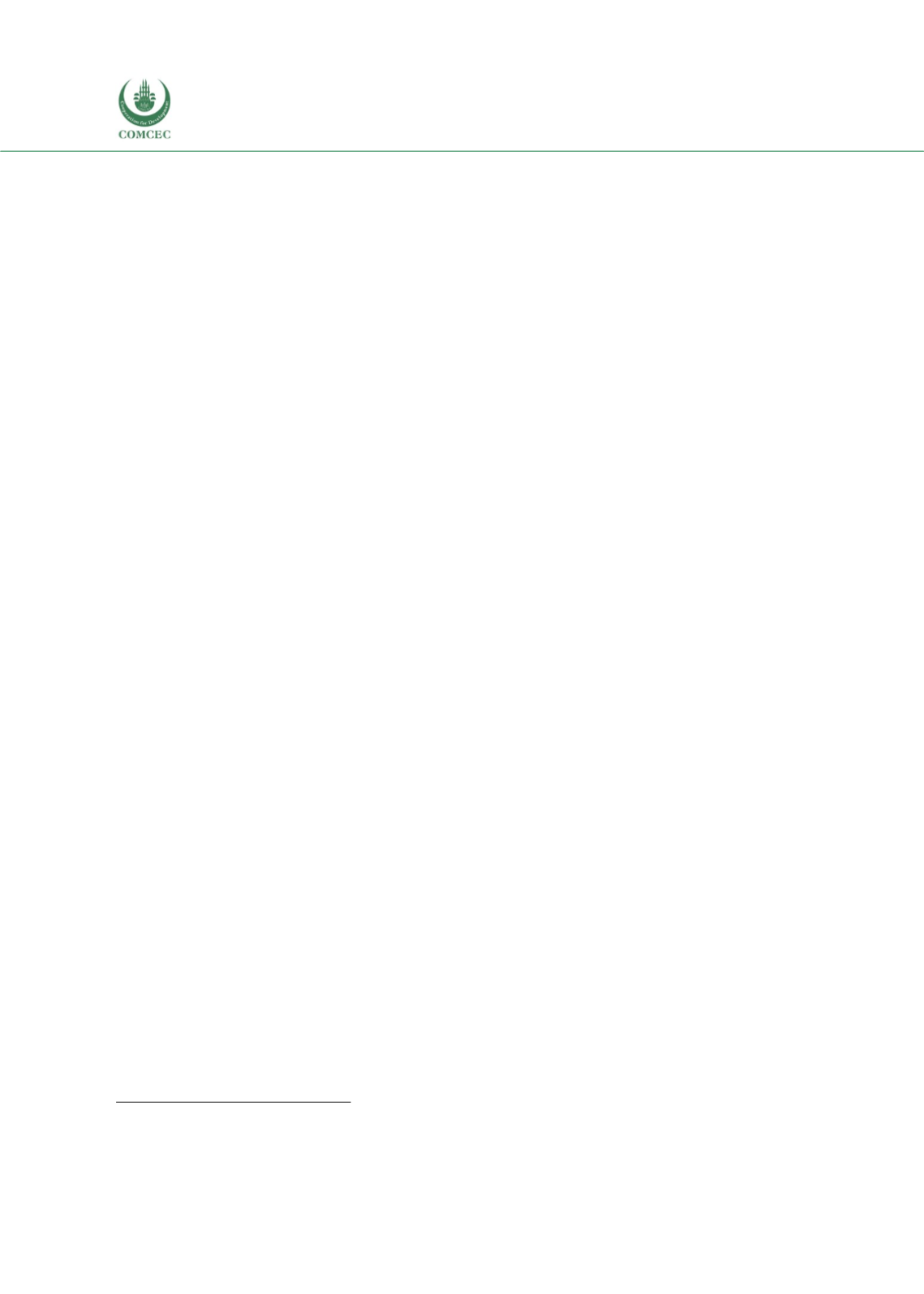

Reviewing Agricultural Trade Policies
To Promote Intra-OIC Agricultural Trade
60
that 92.38% of the total import value for this aggregated HS group is transacted under SPS
regulations.
In terms of SPS measures collected in Table F.13, “Animals” and “Vegetables” have considerably
higher CRs than “Food Products”, “Hides and Skins” and “Wood” as expected. In fact, in many of
the OIC and non-OIC countries, “Animals” and “Vegetables” imports are fully subject to SPS
regulations. Compared with EU that has average CRs over 99% for “Animals” and “Vegetables,”
only the Arab group have high averages closer to the EU levels. The table also shows that the
Arab group countries, on average, have higher CRs for “Food Products” as well. Regarding the
TBT measures presented in Table F.14, there exists a considerably larger variation in all five
product groups and both for the OIC and non-OIC countries. In some countries and some product
groups, CR is less than 1% whereas in some others the entire import value is subject to TBTs.
Compared with the EU that records CRs of over 99% for “Animals”, “Vegetables”, “Food
Products” and “Hide and Skins” each and a CR of over 80% for “Wood”, the OIC figures remain
much lower with certain country-product exceptions. Missing data is much common in the case
of CRs associated with pre-shipment inspection and other formalities (Table F.15). There is
again a sizable degree of variation across countries and product groups. The OIC countries have,
on average, larger levels of CR compared to the EU average.
It remains a difficult task to draw a definite policy conclusion out of this overview of NTM data
given the limited coverage of product and country groups. However, since “Live animals” and
“Meat” stand out as product divisions that may serve a potential to promote intra-OIC trade and
that currently have lower degrees of tariff protection within the OIC, the analysis of existing
NTMs for “Animals” is a crucial aspect of promoting intra-OIC agricultural trade. Standardization
issues and Halal certification enter the picture from this angle; a unified system of standards and
Halal certification principles accepted and exercised by all of the OIC member countries would
directly contribute to the elimination of NTM-related barriers that are adversely affecting the
intra-OIC trade flows in “Live animals” and “Meat.”
The notion of establishing common standards among the Islamic countries dates back to mid-
1980s, while the Standards and Metrology Institute for Islamic Countries (SMIIC) has initiated
its activities in 2011. The main objective of SMIIC is to establish harmonized standards for
expedited exchange of goods and services among the OIC member countries by eliminating
technical barriers to trade in broad sense. As underlined by COMCEC (2018b), SMIIC is the only
global body working for the establishment of common standards and accreditation frameworks
among Islamic countries. The Standardization Management Council (SMC) is the main organ of
the SMIIC that has been assigned with the task of development of OIC/SMIIC standards. SMC
governs the activities of 15 technical committees specialized on Halal food, Halal cosmetic,
energy efficiency and renewable energy, tourism, transportation, leather, jewelry, etc. The 6
th
technical committee (TC6) specializes on agricultural products covering “agricultural,
horticultural, and dairy products, food products of livestock, the products of poultry and bee
raising, the edible products of forestry.” (SMIIC, 2018). Of 57 OIC member countries, 37
countries are also participant countries of the SMIIC
12
where Bosnia and Herzegovina, Thailand
and the Turkish Cypriot State are observer states.
COMCEC’s (2016) analysis on the compliance of the OIC member states to international
standards indicates that the OIC countries have varying degrees of compliance to harmonized
international standards such as those of ISO, IEC and the Codex. The low degree of participation
12
These are Afghanistan, Algeria, Azerbaijan, Benin, Burkina Faso, Cameroon, Côte d'Ivoire, Djibouti, Egypt, Gabon, Gambia,
Guinea, Iran, Iraq, Jordan, Kazakhstan, Kyrgyz Republic, Lebanon, Libya, Malaysia, Mali, Mauritania, Morocco, Niger, Pakistan,
Palestine, Qatar, Saudi Arabia, Senegal, Somalia, Sudan, Suriname, Tunisia, Turkey, Uganda, UAE, and Uzbekistan.
















